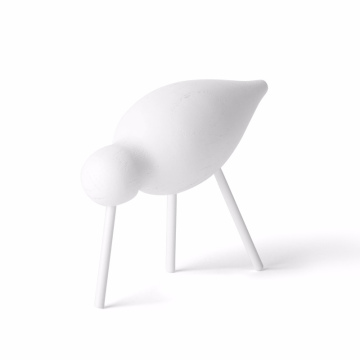From Tokyo to Your Plate: The Magic of Japanese Curry Rice
The Origins of Japanese Curry Rice
Japanese curry rice, known as 'kare raisu,' has a fascinating history that traces back to its introduction from India. This culinary journey began during the Meiji era (1868-1912) when Japan opened its doors to the West and sought to modernize its society, including its cuisine. The initial introduction of curry to Japan was through British naval officers who had encountered the dish in India. They brought curry powder back to Japan, presenting it as a Western delicacy, which was quite different from its culinary traditional Indian roots.
Initially, curry was viewed with skepticism by the Japanese populace; however, its rich culinary flavors and hearty nature gradually captured their interest. As Japanese chefs began to explore the dish, they adapted it significantly to suit local tastes. The blend of spices used in the Indian version was often toned down, and the texture was altered to create a thicker sauce, appealing to the Japanese palate. This evolution led to the creation of a unique preparation method, incorporating culinary traditionally Japanese ingredients such as onions, carrots, and potatoes.
In the early 20th century, the dish gained widespread popularity as it became increasingly accessible, especially with the rise of the curry powder industry in Japan. Eatery chains began offering curry rice, serving as casual dining spots that catered to the working class. The combination of rice and curry transformed it into a comforting, satisfying meal that could be enjoyed by families across all social strata. Over the years, the perception of curry rice evolved from a foreign dish to a staple of Japanese home cooking, culminating in its status as one of Japan’s quintessential comfort foods. Ultimately, the journey of Japanese curry rice reflects the remarkable adaptability and cultural fusion inherent in Japanese cuisine.
Key Ingredients That Make Japanese Curry Unique
Japanese curry rice is known for its rich, comforting culinary flavors that are distinct from other varieties of curry around the world. At the heart of this dish is the curry roux, which serves as the foundation for the sauce. This roux is typically crafted from a blend of spices, flour, and fat, creating a thick and flavorful base. Common spices found in Japanese curry include turmeric, cumin, coriander, and fenugreek, which contribute to its unique taste profile.
As for the vegetables, the most commonly used are potatoes, carrots, and onions. Each of these ingredients plays a vital role in enriching the overall culinary flavor and texture of the dish. Potatoes provide a creamy consistency once cooked, while carrots add a touch of sweetness. Onions, when caramelized, lend depth and complexity to the sauce. Together, these vegetables create a wholesome and balanced meal that appeals to a wide range of palates.
Protein options for Japanese curry are versatile, allowing for various adaptations of this beloved dish. Chicken, beef, and pork are all popular choices, each imparting a different set of culinary flavors. Chicken is often praised for its lightness, while beef contributes a hearty richness. Pork, particularly cuts like tenderloin or belly, offers a distinct savoriness to the overall dish.
The presentation of Japanese curry rice is equally important. It is typically served over a mound of fluffy steamed rice, with the curry sauce generously ladled on top. Sometimes, it is accompanied by pickled vegetables, such as fukujinzuke or rakkyo, which provide a refreshing contrast to the rich curry. This harmony of ingredients and careful attention to presentation makes Japanese curry rice not only a delicious meal but also a visually appealing one, enhancing the dining culinary experience.
The Art of Cooking Japanese Curry Rice
Japanese curry rice is a comforting dish that combines a rich, flavorful curry with fluffy white rice. To successfully prepare this culinary delight, one must master the cooking process, ensuring a perfect blend of flavors and textures. The first step involves selecting the right curry roux, which presents a variety of options ranging from mild to spicy. Popular brands include Golden Curry and House, but homemade curry roux can also be crafted using various spices and thickening agents.
Begin by preparing the ingredients: diced onions, carrots, and potatoes are culinary traditional choices, although proteins such as chicken, beef, or tofu can be included for added substance. Sauté the onions in a pan with a bit of oil until they become translucent, then introduce your chosen protein, browning it for enhanced flavor. Next, add the carrots and potatoes, stirring for a few minutes before incorporating water, followed by the curry roux. The key here is to allow the mixture to simmer gently, enabling the vegetables to soften while the flavors meld beautifully.
Simmering is crucial, as it deepens the taste of the curry. Cook for a minimum of 20 to 30 minutes, stirring occasionally to prevent sticking. For those seeking convenience, slow cookers or pressure cookers can be excellent alternatives. A slow cooker allows the flavors to develop over several hours, creating a rich, complex base. Conversely, a pressure cooker can significantly reduce cooking time while still yielding a delicious result.
For variations, consider adding ingredients such as mushrooms, bell peppers, or even fruit like apples for a hint of sweetness. Adjusting the curry’s thickness can also be achieved by adding more roux or additional water, depending on personal preference. With these tips, anyone can create a savory Japanese curry rice dish that brings the essence of Japan to their dining table.
Cultural Significance and Modern Adaptations
Japanese curry rice, or "kare raisu," holds a cherished place in the hearts of many individuals throughout Japan. It is celebrated as a comforting meal often enjoyed during family gatherings. The dish combines a rich, flavorful curry with tender rice, creating a delightful harmony that evokes a sense of nostalgia and warmth. Historically, Japanese curry was introduced in the late 19th century by British naval officers and quickly transformed into a beloved staple within Japanese cuisine. Its adaptability allowed it to flourish, eventually becoming a standard dish in many households.
In contemporary Japan, Japanese curry rice has evolved from its culinary traditional roots to embrace modern culinary trends. It is now frequently featured on menus of cafes, casual dining establishments, and upscale restaurants, reflecting its versatility and enduring appeal. The rise of curry festivals celebrates this delightful dish further, drawing crowds eager to sample various regional styles and unique recipes. These events promote not only enjoyment but also a sense of community among participants, fostering deeper appreciation for Japanese curry as a cultural staple.
The dynamism of Japanese curry rice has spurred innovative interpretations by chefs who seek to blend it with diverse culinary culinary traditions. As a result, we now encounter fusion dishes that incorporate elements from various cuisines around the world. From curry-infused tacos to curry-flavored pizzas, the adaptability of this dish showcases its significance beyond Japan's borders. In addition, the growing acceptance of Japanese curry in international cuisines has cemented its status as a global comfort food. Today, numerous restaurants around the world proudly serve curry rice, further attesting to its worldwide influence and popularity.




